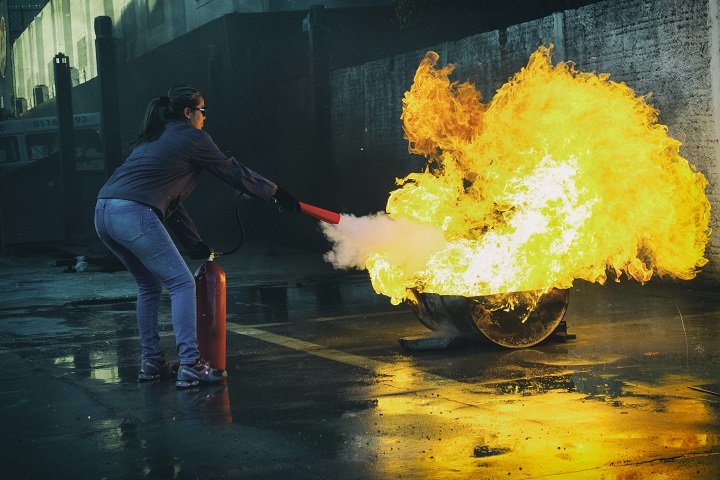When choosing a suitable fire extinguisher for your building, first, you need to assess each room assigned for its installation. No single type of extinguisher is fully functional on every kind of fire. Therefore, it is essential to look carefully. Not only is it practical to keep fire extinguishers in your building, but it’s also what the law states in different places. Choosing the wrong fire extinguisher for the job can be very dangerous and potentially make the fire worse.
Fire Extinguisher Classes
There are different classes of fire extinguishers that can put out different specific types of fire. The classes are A, B, C, and D.
- Class A extinguishers can put out fires in ordinary combustibles such as paper and wood.
- Class B extinguishers can put out fires on combustible liquids like gasoline, oil, and grease.
- Class C extinguishers are only suitable for fires caused by electricity.
- Class D extinguishers are for flammable metals.
Once you have deliberated on what possible fires the room can encounter, next you need to learn how to use a fire extinguisher. Here are the steps you need to keep in mind:
- Pull the pin on the fire extinguisher to break the tamper seal.
- Aim the fire extinguisher at a lower angle, with the nozzle pointed at the base of the fire.
- Quickly squeeze the handle of the fire extinguisher to release the extinguishing agent.
- Glide the nozzle from side to side while pointing at the base of the fire until extinguished.
- If the fire re-ignites, repeat the last three steps.
Different Types of Fire Extinguishers
You might be only familiar with only one type of fire extinguisher, but there are many types. These types are;
- Water and foam
- Carbon dioxide
- Dry chemical
- Wet chemical
- Cleaning agent
- Dry powder
- Water Mist
- Cartridge-operated dry chemical
Each of these fire extinguishers is best for a different fire although there is some overlap. Fire extinguishers work by disrupting other parts of the fire triangle.
Water and Foam
Foam fire extinguishers are typically in manufacturing plants, commercial storage facilities, fueling stations, etc. You can only use water-based fire extinguishers to extinguish Class A fires, while you can use foam-based fire extinguishers to stop Class A and Class B fires.
Carbon Dioxide
Carbon dioxide fire extinguishers are mainly for areas that require cleanup or involve some form of contamination. They are used primarily in commercial settings such as processing areas or food storage, laboratories, and telecommunication rooms. Carbon dioxide fire extinguishers are for stopping Class B and Class C fires.
Dry Chemical
A dry chemical fire extinguisher is used mainly for fires associated with automobiles, laboratories, boats, and garages. An efficient dry chemical fire extinguisher is used primarily for Class B and Class C fires.
Wet Chemical
These fire extinguishers are often in kitchens because of the risk of fires caused by fat, grease, and oil. Wet chemical fire extinguishers are efficient on Class K fires.
Clean Agent
The clean agent fire extinguisher is an extinguishing gas created to extinguish gaseous fires. This clean agent fire extinguisher is installed in a fire-suppression system. This extinguisher comprises a gas solution with 60–80% tetrafluoroethane, between 10 and 30% pentafluoroethane, and 10–30% carbon dioxide. It is typically used and is most effective on Class B and Class C fires that commonly involve propane, butane, oil, petrol, and similar substances.
Choosing a suitable fire extinguisher is necessary to keep your establishments safe from any life-threatening accidents. By following these steps and tips, choosing the perfect fire extinguisher for your establishment won’t be a hassle. If you require more suggestions, don’t hesitate to ask for recommendations from professionals.



